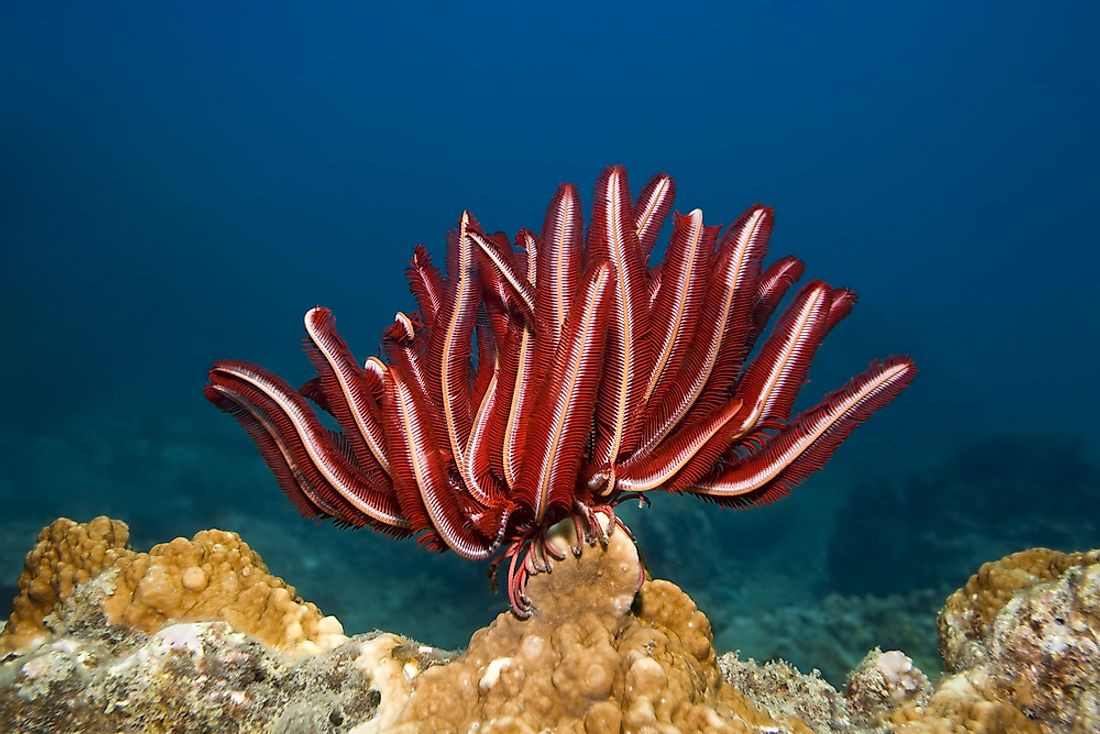What is a Crinoid?

Popularly known as sea lilies, crinoids are sea creatures related to the starfish, brittle stars, and sea urchins. There are about 700 species of crinoids known to humans. Some of the crinoids have a “stem” while others lose their stems when they grow older. The crinoids with stems are called sea lilies while those that do not have stems are called feather stars.
Physical Description
Crinoids have tube feet, a water vascular system, and radial symmetry. Most crinoids have more than five arms. Their mouths are located on the top surface with feeding arms surrounding it. The crinoids’ gut is u-shaped. Unlike starfish which has no excretory organ, the crinoids have an anus. It is located near their mouth.
Behavior
Crinoids stand upright in the water current leaving its stem to hang freely in the water. This posture enables the food grooves to filter out any food flowing with the water current. The sea lilies live in groups but do not have any track of the time of the day since they live very deep in the sea. When they are not feeding, the sea lilies fold their arms around their body forming a ball. Some crinoids are nocturnal and as such only come out of their hiding to feed at night. However, those crinoids that feed during the day can be easily seen around the Indo-Pacific reefs. Feather stars can swim and crawl. Therefore, they can move about in search of food. Additionally, they can swim away from their predators such as the sea urchins.
Habitat and Range
Many crinoids existed during the Paleozoic fossil era. Today, they live in the western part of the Pacific Ocean and the Atlantic Ocean. Crinoids inhabit deep waters and attach themselves to the ocean floors. They can live as deep as over 9,000 meters from the surface of the water. Consequently, they are rarely seen by man. Feather stars live on coral reefs. Both the sea lilies and the feather stars live on hard surfaces.
Diet
The crinoids possess feathery and tentacle-like appendages. The appendages open like a budding flower to capture food particles such as planktons that get trapped inside it. Besides planktons, crinoids also feed on foraminifera, diatoms, ciliated protozoans, detritus particles, and some types of eggs. The crinoids use this method to filter food particles from the water currents that flow past them. They feed through the suspension feeding mechanism.
Reproduction
Crinoids lack true gonads. Therefore, gametes are formed within their genital canals located inside the crinoid’s pinnules. The rapture of the pinnules releases the sperm and egg into the water. The eggs are fertilized, and then they hatch and release a free-swimming larva. The larva may be bred shortly after by the females. Otherwise, after a short period of swimming, they get attached to the bottom of the sea. After some time of growing into adulthood, the crinoids detach themselves from the sea floors and swimming freely in the ocean. After 10-16 months, the crinoid becomes ready to reproduce.











